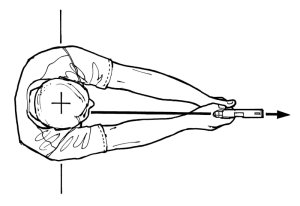
Rant: “Tactical Instructors”

By Keith Sipmann
I recently read a comment on a popular tactical instructors YouTube video that was referring to that particular instructors style of teaching – based on what the person commenting saw in this instructors video clips. The “commenter” was basically stating that the instructor took too long in his explanations (regarding a firearm shooting drill) and that another popular instructor (we won’t mention who) within the industry provided quicker instructions and answers to his students questions. Now, you gotta ask yourself….are short, direct and to the point answers really a good thing, especially considering what subject is being taught? The following text is my argument as to why it is not optimal.
The term instructor has been thrown around the tactical training community for far too long in my opinion. Many within this industry don’t have any official training background and are actually more like subject matter experts (SMEs) by definition. Don’t get me wrong, subject matter experts offer a lot of value when it comes to building courses. That’s right, BUILDING courses, not teaching them. Normally SMEs have invested lots of time in developing their expertise so they’re able to touch on nuances that go beyond just information. This can be critical in your course design. Subject matter experts know their subject matter…that’s why they’re called experts. But they don’t always know how best to teach what they know. That’s the difference between a instructor and a SME. A subject matter expert has the experience, skill and knowledge to perform a task by themselves, but that doesn’t guarantee that they’re necessarily the best person to teach it; that’s because they may lack the natural talent to teach, or they may have no idea about the adult learning concept. When taking a “tactical training class” it’s very important to do your homework on the instructor as there are some challenges when working with someone who is only a subject matter expert and not a skilled instructor. Often they’re so far removed from the learning process that they confuse students with the content and lose perspective on what is most essential to learning new skills.
Unless instructors know how to engage their students in the lessons they have prepared, expertise in the subject matter counts for very little. As someone who comes from a training & development background, an instructor, in most cases, should be able to teach any subject with the proper amount of planning. Take Travis Haleyof Haley Strategic for example. Based on his background and the skill sets he has acquired through his time serving within the special operations community and private contract world, he would definitely be classified as a SME…but he is also a highly talented interpersonal, intrapersonal and visual-spatial instructor. He is not like any other instructor I have met in the industry, in that he really spends a lot of time focusing on connecting with his students. He demonstrates the understanding that most adult learners develop a preference for learning that is based on childhood learning patterns – Visual, Auditory and/or Kinesthetic learning (there are many styles but I’ll stick to three general categories to make it simple). All of his experience plus a natural ability to lead, build relationships and teach others makes him a great choice for an instructor.
As stated above, most adult learners develop a preference for learning that is based on childhood learning patterns. In general, visual learners prefer seeing what they are learning. Auditory learners prefer to hear the message or instruction being given — meaning these people prefer to have someone talk them through a process, rather than seeing or reading about it first. Kinesthetic learning is a learning style in which learning takes place by the student carrying out the physical activity, rather than listening to a lecture or watching a demonstration. In my opinion, having someone take the time to explain something in great detail tells me that they are fully aware that adults learn in different ways and they care enough to take the time to cover all the bases to ensure their students are retaining what’s being taught. An “instructor” (who’s really more of a SME) that develops a one size fits all approach to training is not a good way to educate adult learners. Blended approaches that try to cover a wide range of learning styles is most likely a better way to create a more positive learning experience.
Remember, before enrolling into an $600-800 course, understand that most of these instructors don’t know much about their students backgrounds or personalities…there are no learning style tests or True Colors, Meyers Briggs or Kolbe Index personality tests taken before class starts, so the instructor has no idea if you are a Visual, Auditory or Kinesthetic learner. Therefore, its your job to research the instructor. Go online and look at reviews and articles regarding feedback on prior students experiences. Do you know what learning style you fall into? Take this quiz provided by edutopia.org, it asks 24 questions and will take less than five minutes to complete. This might help you when looking for the right instructor. Before committing to a course, you need to be real with yourself and the way you process information. Consider all of the information before hand, as picking the wrong instructor can be both frustrating and costly.
Stay alert, stay alive.



